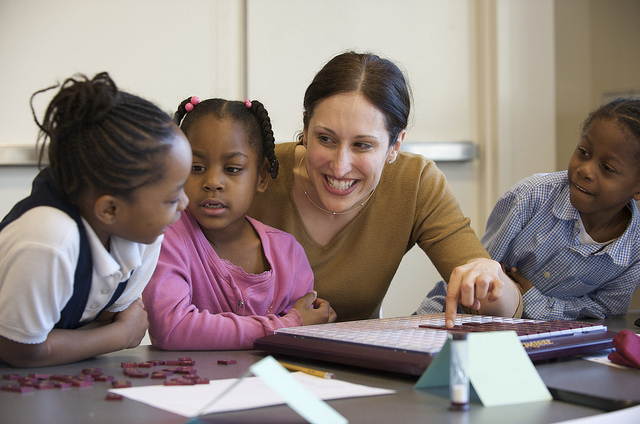In this 20-part series, I explore the root causes and effects of academic disengagement in K-12 learners and explore the factors driving American society ever closer to being a nation that lacks intellectualism, or the pursuit of knowledge for knowledge’s sake.
Americans pride themselves on their high ideals. On national holidays Americans delight in quoting phrases like “all men are created equal” and “life, liberty and the pursuit of happiness.” The ideologies of freedom of religion, democratic government, and socio-economic mobility are ingrained in American children beginning in pre-K educational settings. While these ideologies are admired from a distance, real progress in reaching these goals is undercut by a growing national trend: anti-intellectualism.
The Why of Academic Disengagement
College students today are more academically disengaged than ever before, and this is a direct result of their K-12 classroom experiences. A UCLA survey found that college freshmen in 1997 had spent less time than any previous freshman class on homework and extracurricular activities when they were in high school. K-12 students are shaped by a media-frenzied society which promotes instant gratification and by an educational system that tries simultaneously to compete with attention-grabbing media and to keep all students on the same plane by watering lessons down. The outcome is a growing group of students who know much less than their ancestors did, and who care very little for educational pursuits that do not immediately affect their day-to-day lifestyles.
Academic disengagement does not discriminate. In his book Beyond the Classroom, researcher Laurence Steinberg finds that economic status, race and ethnicity do not have a much of an impact on K-12 student engagement. Steinberg concludes that anti-intellectualism and the accompanying disinterest in educational pursuits is a nationwide epidemic and that the number of students who simply do not care about what is being taught has never been higher. This is what might be expected from students who approach educational pursuits with a feeling of entitlement based on years of low expectations in education settings. When students encounter a teacher who demands more than some of their previous instructors they become resentful and feel they should not be asked to do so much. A course with difficult requirements is written off by students as being “unfair.”
A Nation of Slackers?
Though the “slacker” mentality certainly affects students in other countries, American students are the poster children for this syndrome. More American children are attending college than ever before, but these students are less interested in what is being taught than their predecessors were. The push for equality in education, starting with the youngest pre-K students, has devalued educational content. Instead of raising the standards for all children, the US has lowered the educational bar under the guise of giving everyone a fair shot. But in fact equality in educational opportunities and the demands placed on students are not necessarily correlated; difficulty and complexity of education need not suffer in order to promote equal opportunity. Dumbing down American students is not a formula for progress in future generations.
The U.S. has been affected by anti-rationalism and by self-contradiction from its earliest days. The founding fathers wrote movingly about inalienable rights and freedom from persecution, but they avoided outlawing slavery or giving women a share in the governance of the new country when they signed their names to formative documents. The liberties they outlined could be afforded only if they did not stand in the way of personal gain.
This is not to say that the signers of the Constitution and the Bill of Rights were completely devoid of intellectualism or that they were narrow-minded. They poured over documents like the 13th century Magna Carta and Jean-Jacques Rousseau’s 1762 Of the Social Contract to seek guidance for setting up a fair government that blended the best of what was already in existence with fresh, all-American ideas.
There was really no way in which the elite group of men entrusted with writing the country’s blueprints could have addressed every political or social issue with surety, but thankfully they knew enough to include reasonable avenues for change in the future. That “open for interpretation” mentality, however, has handicapped intellectual pursuits since the dawning of this great nation.
Roots in Anti-Intellectualism
From America’s earliest days as a nation to the present day a war between intellectualism, defined by the Oxford Dictionary as the “theory that knowledge is wholly or mainly derived from pure reason,” and its enemy anti-intellectualism, often entrenched with deep emotional and spiritual attachments, has raged. Though less vehement during certain periods of time, particularly prosperous ones, the battle for the adaptation of rational thought in American society has always been present.
It would seem, however, that the nation in the first quarter of the 21st century is in a particularly heightened state of polarization in the intellectualism spectrum. Despite attempts to broaden their world view, and expanding ability to communicate beyond the barriers of the past, Americans seem to be trending toward further division when it comes to the controversial issues of the day. Consider creationism versus evolutionary theory – one is based solely on faith and the other on science, yes the latter is still called into question when taught in certain areas of the country.
So how can the pursuit of intellectual knowledge be regained in our K-12 classrooms? Or is it past the point of no return?














